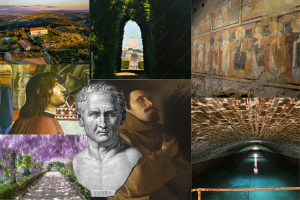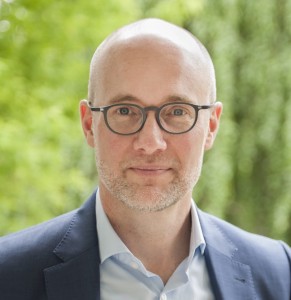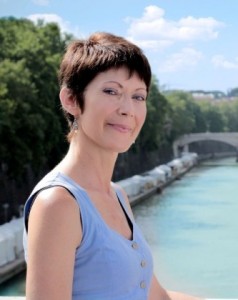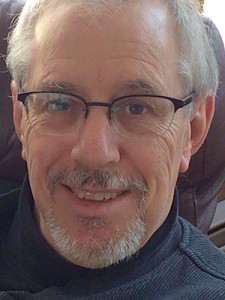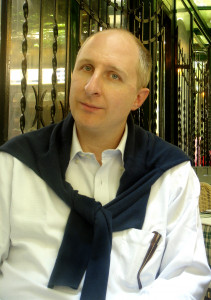Everything Past is Present:
Rome and Florence as Theaters of the Mind
Professor Shane Butler, Johns Hopkins University
Professor Lila Yawn, John Cabot University (Rome)
Professor Lawrence Manley, Yale University
with
Marcello Simonetta, The Medici Archive Project, NYU Florence and Syracuse University
Rome and Florence
An EverScholar Residential Seminar in Italy
May 28 – June 11, 2023
Introduction: The City as Palimpsest
Palimpsest /palimpsest/ • noun 1 a parchment or other surface on which writing has been applied over earlier writing which has been erased. 2 something reused or altered but still bearing visible traces of its earlier form: the house is a palimpsest of the taste of successive owners. — ORIGIN from Greek palin ‘again’ + psestos ‘rubbed smooth’ —Compact Oxford English Dictionary.
Capital of empires for more than two millennia, continuously inhabited for well over three, Rome presents itself to the knowing observer as a palimpsest in space, a three-dimensional page written upon, cleaned of its writing (though never entirely), and rewritten in the visual idioms of later eras, often multiple times. Rome’s unique ‘look’ and its salient place in the history of world art derive in part from the consequent intricate overlays and promiscuous interminglings of time-specific materials, aesthetics, and visual ideas. Newer elements cover and efface—while responding to— older ones; older ones inspire and condition the new while revealing themselves fully, fragmentarily, indirectly, or not all.
The layered nature of Florence will be explored through “The Palimpsest of Fame,” an examination of the changing meaning and significance of important Florentine texts, artifacts,and sites from the twelfth century to the twentieth centuries. The lives and works of five illustrious Florentines (Boccaccio, Leonardo Bruni, Michelangelo, Machiavelli, and Galileo) will be explored in terms of the multiple pasts and presents of medieval, Renaissance, and Grand Tour histories of the city.
Contemplating such remarkable topographies, Sigmund Freud was moved to use Rome as a metaphor for the working of the human mind:
Now let us, by a flight of imagination, suppose that Rome is not a human habitation but a psychical entity with a similarly long and copious past — an entity, that is to say, in which nothing that has once come into existence will have passed away and all the earlier phases of development continue to exist alongside the latest one. This would mean that in Rome the palaces of the Caesars and the Septizonium of Septimius Severus would still be rising to their old height on the Palatine and that the castle of S. Angelo would still be carrying on its battlements the beautiful statues which graced it until the siege by the Goths, and so on. But more than this. In the place occupied by the Palazzo Caffarelli would once more stand — without the palazzo having to be removed — the Temple of Jupiter Capitolinus; and this not only in its latest shape, as the Romans of the Empire saw it, but also in its earliest one, when it still showed Etruscan forms and was ornamented with terra-cotta antefixes. Where the Coliseum now stands we could at the same time admire Nero’s vanished Golden House. On the Piazza of the Pantheon we should find not only the Pantheon of today, as it was bequeathed to us by Hadrian, but, on the same site, the original edifice erected by Agrippa; indeed, the same piece of ground would be supporting the church of Santa Maria sopra Minerva and the ancient temple over which it was built. And the observer would perhaps only have to change the direction of his glance or his position in order to call up the one view or the other. —Sigmund Freud, “Civilization and its Discontents,” in The Standard Edition of the Complete Psychological Works of Sigmund Freud, trans. James Strachey, vol. 21 (London, 1961), p. 70.
What happens, however, when we flip Freud’s metaphor and take Rome and Florence seriously as thinking machines: that is to say, as places where the layering of time makes possible the generations of thought (and of beauty) that no single person or age could complete? This is what this seminar proposes to do.
To this end, we have assembled a team of scholars who, individually and collectively, have unusually dense expertise, not just in this or that period of Italian history, but across its long sweep, from most distant antiquity to the present day. Accordingly, we shall seize the opportunity to abandon the conventional study of Rome and Florence as an ordered timeline of successive epochs and instead plunge ourselves into both cities’ marvelous and messy simultaneities, in which a single spot can belong to prehistory, classical antiquity, the Middle Ages, the Renaissance, and more recent modernity all at the same time.
Along the way, we’ll think with writers like Lord Byron who similarly reflected on Italy as a place that seemed to belong, at once, to all times and to none. We’ll also look at artists, like Giovanni Battista Piranesi, who tried to represent this untimeliness visually. And we’ll also think a lot about books and libraries, including some actual palimpsests.
The course, we hope, will offer a rare opportunity to begin to see Rome and Florence as so much more than the sums of their parts.
With you are like-minded friends old and new – your fellow scholars. Every day, you engage in seminar discussions, and journeys to cultural, historic, and artistic sites that are at the heart of this course’s learning. Meanwhile, you enjoy fine accommodations, elite guides, and authentic and gourmet cuisine in the transcendent culinary milieu that is Italy.
The program actually begins months ahead with fantastic readings, curated by our faculty; sources you would never have approached or even known about.The reading is its own reward, even as it excites and prepares you for the EverScholar seminar discussions that await you in Italy.
You will return home with a new cohort of friends; freshly acquired expertise and insight; and a life-highlight set of memories.
This, then, is “Everything Past Is Present: Rome and Florence as Theaters of the Mind,” an EverScholar program in Rome and Florence. Learn more below, and join us for this unforgettable experience.
Our Faculty
Syllabus and Structure of the Course
This program is far too intricate to detail in full here; this section serves to illustrate the broad outline and approach of the course.
We gather on Sunday 28 May in Rome, beginning with a welcome reception and an orientation stroll from the top of the Janiculum Hill, with its panoramic vistas. Our first working day is Monday 29 May. On that day we will begin with the beginning – the Capitoline Hill. But instead of the usual tour of the Forum’s highlights, we will enter unexpected places and begin to see Rome’s layers unfold. On each day the afternoon will review what we saw, find something of it in a work of art, or a section of literature, or in an architectural statement, led by our faculty experts: Shane Butler, Lila Yawn, and others. Each day will see a different palimpsesting – a walk centered around the Tiber River and Island; the Campus Martius; the Crypta Balbi and the Jewish Ghetto; the Oppian Hill with the Baths of Trajan (yes, and the Colosseum). A day studying the Vatican area will not bring the throngs craning to see the Sistine Chapel, but a visit to the Vatican Necropolis – strictly limited and almost a secret. The Aventine Hill will be approached via the mysterious Priory of Malta, with its association with the shadowy Knights Templar.
These are by no means all our topics or visits; they are too numerous to list, but as examples, we will also visit San Clemente church and excavations; San Giovanni in Laterano, Palazzo Corsini and botanical garden, Sancta Santorum Chapel, parks along the Aurelian wall and elsewhere; Biblioteca Angelica; Museo Nazionale Romano di Palazzo Altemps;… and so many more. Comprehensive details will be provided via a syllabus and guide after registration.
This is no conventional “sightseeing tour;” each site serves as the source of the day’s learning – seen through not only an archaeological palimpsest or layering over time, but also through literary, political, artistic, architectural, historical lenses.
On the ninth day, 6 June, we leave for Florence, great city of change, and our theme flowers further, offering new questions in this new locale, and a variant on the theme, namely: “The Palimpsest of Fame.” Another litany of wonders will follow, including the Medici Tombs, the Sacristy outside of public areas of the Duomo, San Miniato, and so many more.
Attendees will take flights back home on Sunday 11 June – unless you decide to stay!
The course will incorporate daily visits to an incredible variety of important sites, closely coordinated with our seminar study and guided by our faculty and expert guides. Some site visits will go beyond guides and tours, with seminar discussion sessions conducted at the sites themselves. Detailed itineraries will be provided to all course registrants.
In the months preceding the course (February-May 2023), seminar participants are expected to complete the required reading in the syllabus (more details in “Readings” section below). Our preparatory readings will come to life through this process and will serve as a continuous source of touchstones. We will read and discuss specific passages / works of art / monuments in close detail, further clarifying and complicating the lessons of the site visits.
Suffice it to say that you will learn to see a Rome and Florence that you never knew existed, in a way you never thought possible.
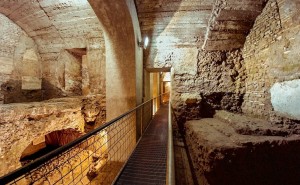
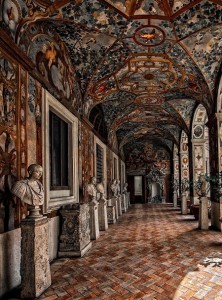
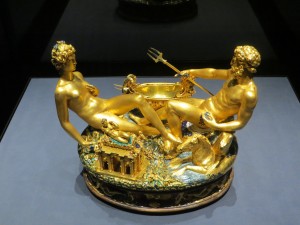
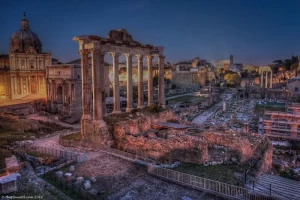
Readings
All EverScholar courses actually start months before our meeting. All books and other materials are included with the course. Upon registration, you will receive several preparatory books in short order; the course packet with scholarly articles and other materials curated by our faculty will follow soon after. Primary sources will mix with authoritative texts to produce night after night of joy as you prepare for your return to the life of the mind.
Special Events
Among EverScholar’s unique and most beloved features are our Special Events; sessions at a number of well-known (such as a museum or art gallery) or less-known centers of collection and learning. “Everything Past is Present” takes this to a new level; the layered nature of our sites serves as a scaffolding for everything we will study, on site and in class. Morning site visits – with guides and seminar discussion on site when permitted – will be followed by an afternoon seminar interpreting and synthesizing what we have just seen; close reading of key passages from magnificent texts; and then, perhaps over a gourmet meal, a discussion and briefing on the next day’s wonders. We will have not only elite guides, but of course our peerless faculty will join us. Picture yourself among a millenia-old surrounding, perhaps ignored by the crowds that walk by, but with the aid of our faculty and your reading, illuminated for you in undreamt of ways. The insight and memories can only be dreamed of now.
Here is a very partial list of sites we will visit (subject to change):
- Vatican Necropolis
- Castel Saint Angelo
- Capitoline Museums
- Jewish Synagogue and Museum
- National Roman Museum of Palazzo Altemps
- Priory of Malta
- Domus Aurea
- Basilica of San Pietro in Montorio
- Palazzo Mattei di Giove
- House of Lorenzo Manilio
- Basilica of Santa Sabina
- Domus Sessoriana
- Basilica di San Clemente
- Villa Farnesina
- Duomo (Cathedral of Santa Maria del Fiore)
- San Miniato
- Medici Chapels and Basilica of San Lorenzo
- Museo del Bargello
- Basilica of Santa Croce with Refectory
- Villa I Tatti
and so much more…
Evenings will also include cultural and other events that will enhance our study.
Our Learning Locations
Our seminar locations will be nothing short of breathtaking. The Eternal City, Rome, and the home of the Medici, Florence, will be our classrooms of first resort. We will conduct our classes first at the sites, with expert guides collaborating with our world-class faculty, equipped where possible with governmental permission to teach “where it happened.” When in our afternoons we have seminars in the classroom, the learning atmosphere will be enhanced by the location and its beauty.
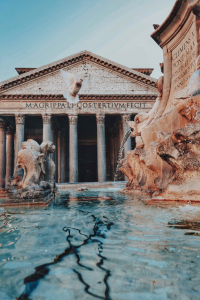
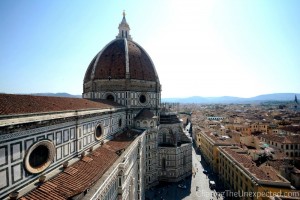
The course begins with an opening session with our faculty, walking down the Janiculum Hill in Rome’s living classroom on the afternoon of Sunday, May 28 in Rome and ends when we return from Florence on Sunday, June 11. We will stay at luxury hotels in Rome and Florence with the option for single or double rooms subject to availability.
The program cost is $13,950 per person double occupancy. Single supplements are offered subject to availability. Deposit is $2,000 per person. Balance is due on March 31, 2023. This EverScholar program includes all seminar sessions, housing, meals, readings, transportation (except airfare to Italy), and site visits. There may be limited spots to bring a companion/guest; details and costs for this are described on registration page. Cancellation refund and COVID-19 refund policies are detailed on the registration page – so you can register without worries. We look forward to seeing you in Italy!
